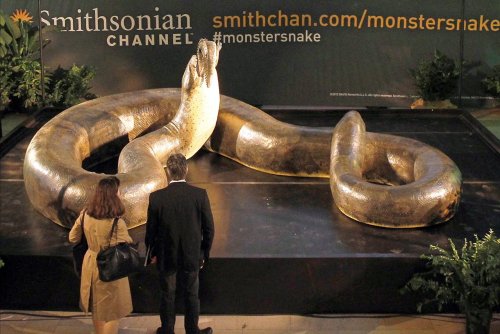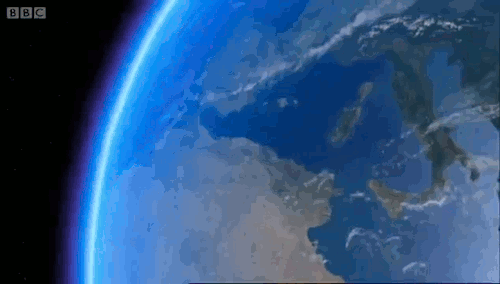Prehistory - Blog Posts
Dunkleosteus

Dunkleosteus, a placoderm, or armoured, fish. It lived around 370 million years ago, during the Devonian period and is arguably the biggest predator of its time. This was a truly impressive fish, literally hard as nails, its head was encased in a solid armour plating and like a shark, it had a streamlike body to swiftly move through the water. Its heavy armour means it would’ve been a relatively slow swimmer, yet capable of short spurts of speed, sort of like some sharks today.
This formidable beast had a major evolutionary strength, a moveable jaw. Fish began to dominate the oceans when they evolved the ability to move their jaw, yet Dunkleosteus had no teeth, what it had was much more menacing. It had razor like blades to slice its prey apart, like a pair of scissors to paper, with a bite more powerful than a great white. It would’ve been able to slice its prey in half so it was able to consume huge animals, yet on the downside the Dunkleosteus was unable to chew and on occasion its stomach found the huge chunks of meat hard to handle, evidence of this is in fossilised sick of the Dunkleosteus that has been found…

(Dunkleosteus armour means its head is often very well preserved. You can see how its teeth would’ve been more than capable of shearing through flesh.)
Relatives of the dunkleosteus, other armoured fish, were mostly dog sized, but Dunkleosteus was an exception. At 6 metres long on average, twice the length of human, this was a seriously big fish, yet it could reach up to 10 metres long, the length of a bus.

Dunkleosteus seems like the perfect predator. However, in its bony plates, indents of other animal teeth have been found suggesting that despite its strength, it was itself hunted. Dunkloesteus teeth marks have been found in its own fossils, they would eat whatever they could get their teeth into, including each other. The success of this gigantic beast was short lived, it was outcompeted by the more nimble sharks. Placoderm fish themselves would be extinct by the end of the devonian, taking the Dunkleosteus with it.


The Titanoboa, is a 48ft long snake dating from around 60-58million years ago. It had a rib cage 2ft wide, allowing it to eat whole crocodiles, and surrounding the ribcage were muscles so powerful that it could crush a rhino. Titanoboa was so big it couldn’t even spend long amounts of time on land, because the force of gravity acting on it would cause it to suffocate under its own weight.
Megalith Cist Burials Found in Southern India

Archaeologists have uncovered a total of 250 cairn circles in southern India’s trade and industrial center of Kodumanal, which was inhabited from the 400s through first century B.C.E.
The cairn circles were made of giant rocks, or megaliths. Most of the cairn circles were around rectangular chambers built of megaliths, which in turn contained burial cists and three or four bowls or pots. The pottery was likely for offerings placed outside the burial cists, showing a belief system that included something after death.
An impressive ten pots and bowls were recently unearthed in a larger circle made of boulders and rectangular-shaped cists made of stone slabs, surrounding a three-chambered burial. This larger, more complex burial might have been intended for someone important in the community.
These Are The Oldest Footprints On Earth

Found on a prehistoric sea floor, the oldest footprints ever found were left between 551 million and 541 million years ago during the Ediacaran period. That is hundreds of millions of years before the dinosaurs.
The trackways tell scientists it was left by a bilaterian animal — that is, a creature with bilateral symmetry that has a head at one end, a back end at the other, and a symmetrical right and left side. Its paired appendages, scientists did not call them legs, were used to raise the animal off the sea floor as it moved.
QUETZALCOATLUS

Quetzalcoatlus goes down in history as the largest flying organism of all time, with a wingspan of 12 metres, which is larger than some planes. Quetzalcoatlus was the undisputed king of the Late cretaceous skies, so it seems fitting that its name is derived from an Aztec god, Quetzalcoatl. Although its wingspan is impressive, Quetzalcoatlus also had a huge 2.5 metre long skull, that is the average height of an Asian elephant! To get such a huge animal in the air, a complex system of air sacs was needed inside the bones, this meant that Quetzalcoatlus probably weighed no more than 250kg. Quetzalcoatlus, along with many pterosaurs, was originally thought to spend most of its time gliding over the oceans, skimming fish out from the surface of the water with their elongated beaks. However, due to the skull and beak morphology and the presence of fossils far inland it has become more widely accepted that Quetzalcoatlus stalked prey far below on the land. The fore and hind limb morphology of Quetzalcoatlus also suggests that they were competent walkers on the land, they would have stood up to 3 metres tall.

The feeding habits of Quetzalcoatlus still remain something of a mystery. It was originally thought to be more of a scavenger, but the blunt beak was unsuited to stripping and picking flesh of a bony creature. It is more likely that Quetzalcoatlus hunted like modern-day storks, stalking the land from the skies above for smaller animals and then swooping down to eat them whole.

Around 6 million years ago, the African and Eurasian plates moved together, cutting the Mediterranean Sea off from the Atlantic. Without an influx of water from the Atlantic, evaporation began removing more water from the Mediterranean than rivers could replace. The sea dried out almost completely over the course of a couple thousand years.
About 5.3 million years ago, the Straits of Gibraltar reopened, creating a massive flood into the Mediterranean known as the Zanclean Flood. Water rushed down the straits and into the Mediterranean at speeds as high as 40 m/s (90 mph). At its peak, the Zanclean Flood is estimated to have reached rates 1000 times greater than the volumetric flow rate of the Amazon River.
A similar breach flood occurred in the Black Sea within the past 10,000 years when the Bosporus became unblocked. That flood likely had a devastating impact on Neolithic societies in the area and may be the inspiration for the floods described in the Epic of Gilgamesh and the Bible. (Image credit: BBC, source)